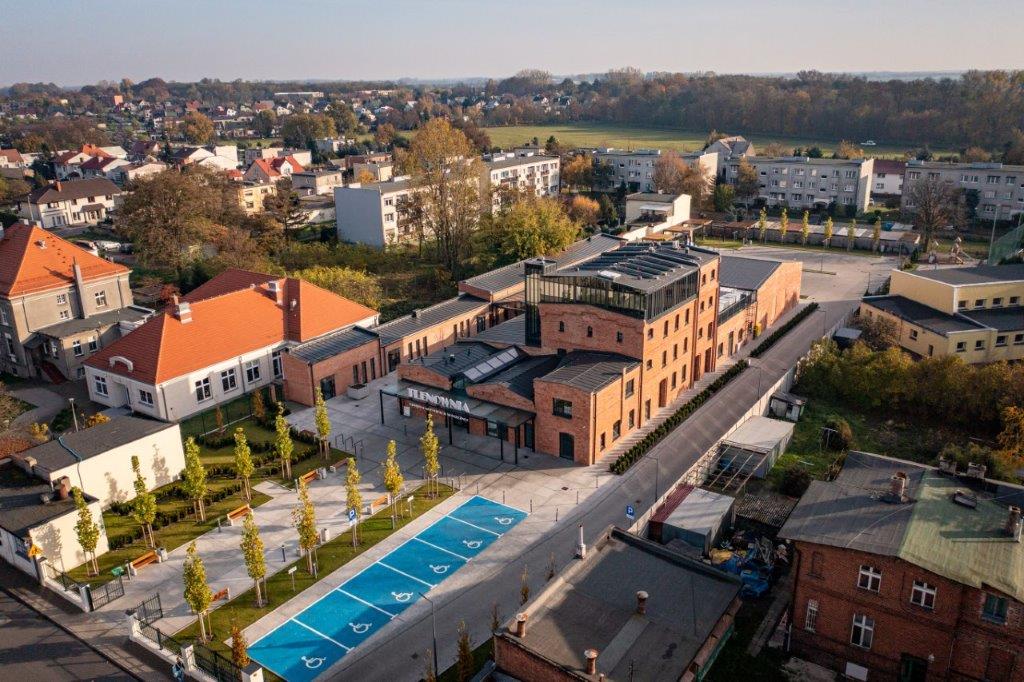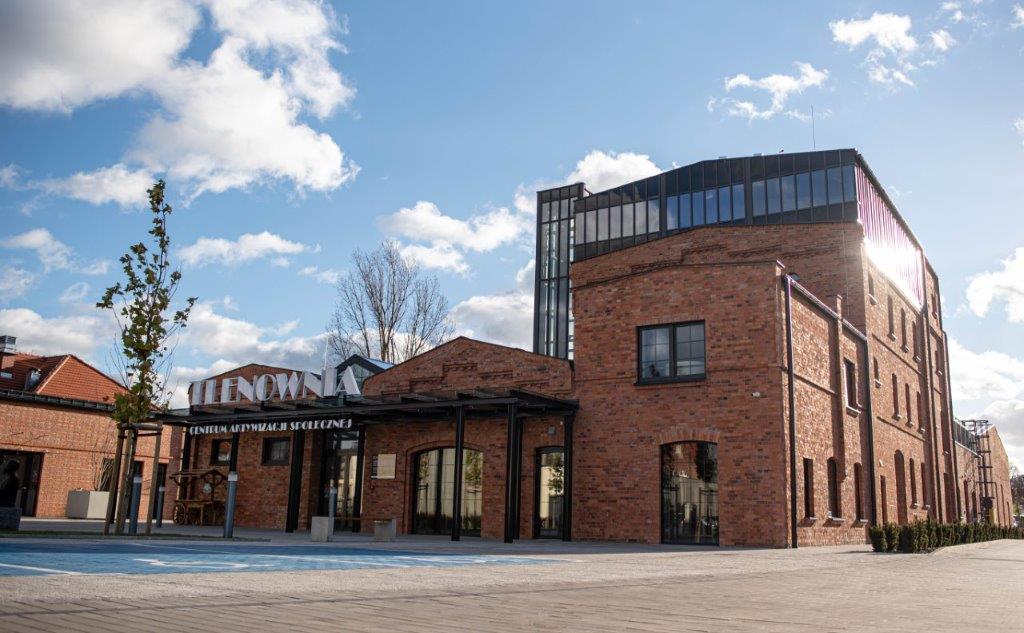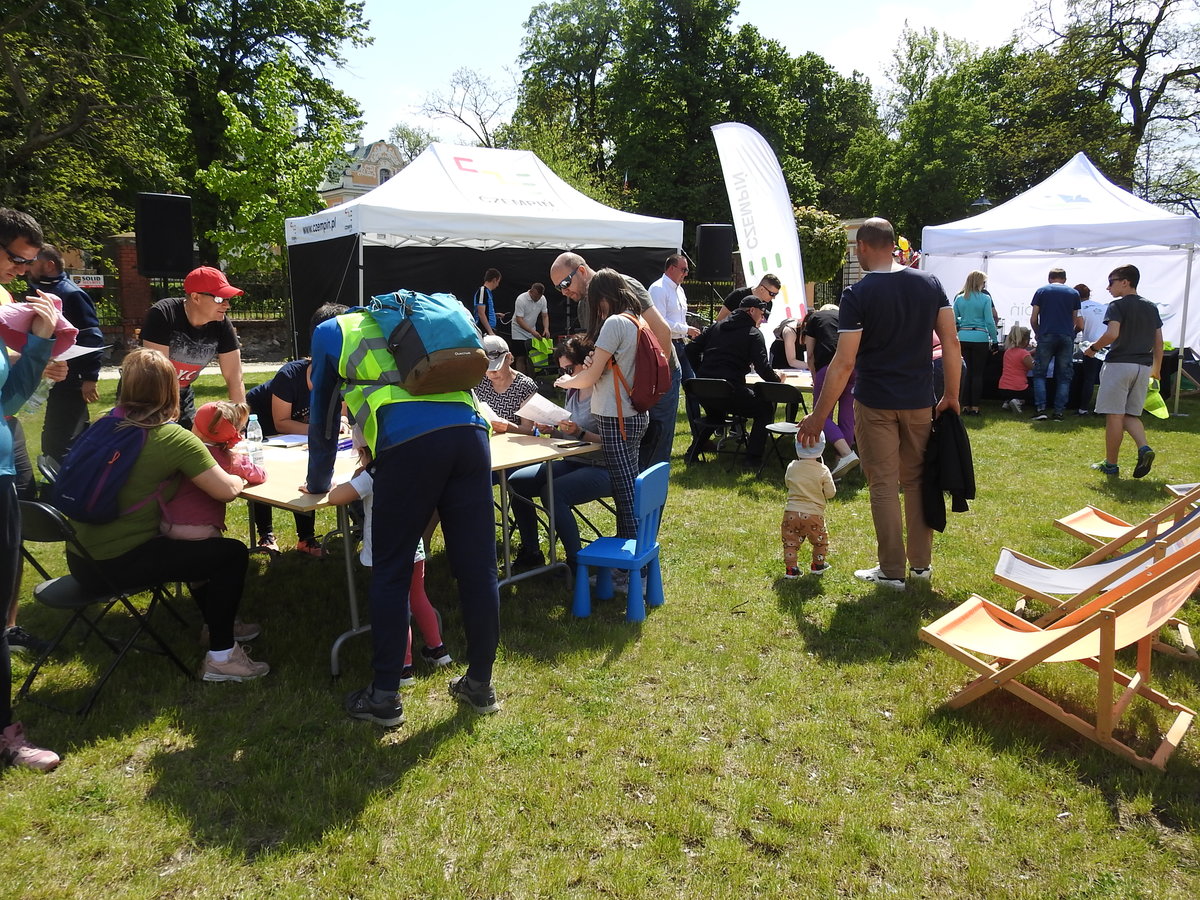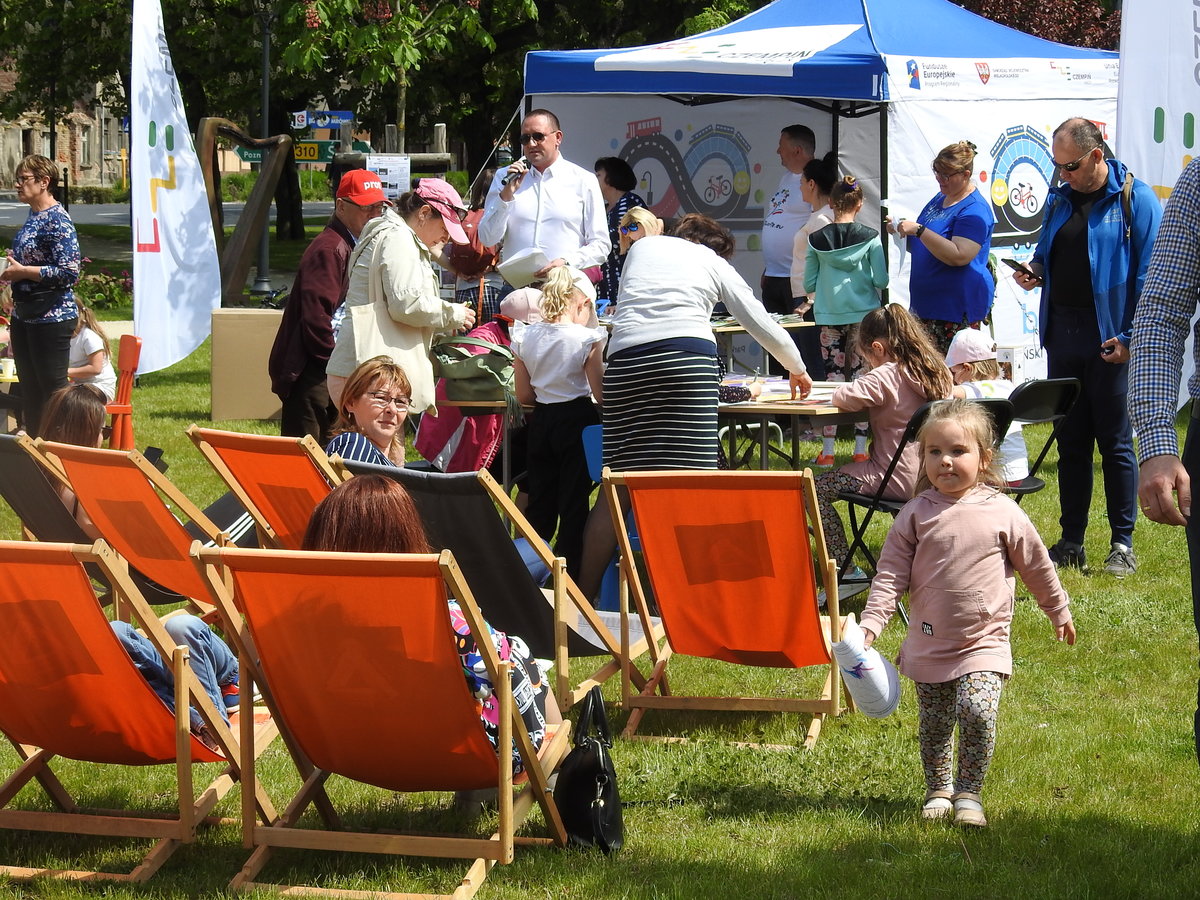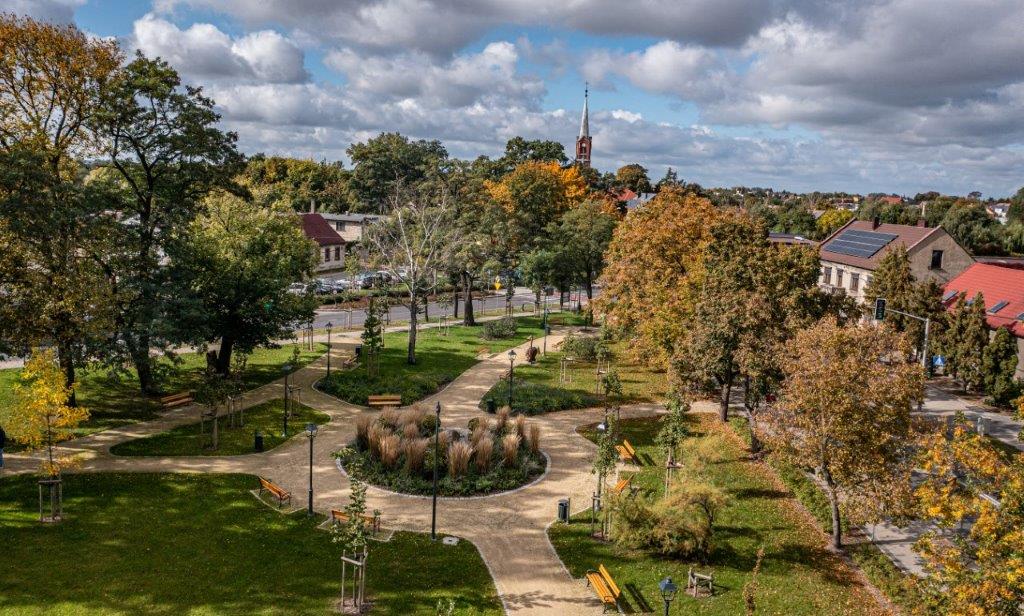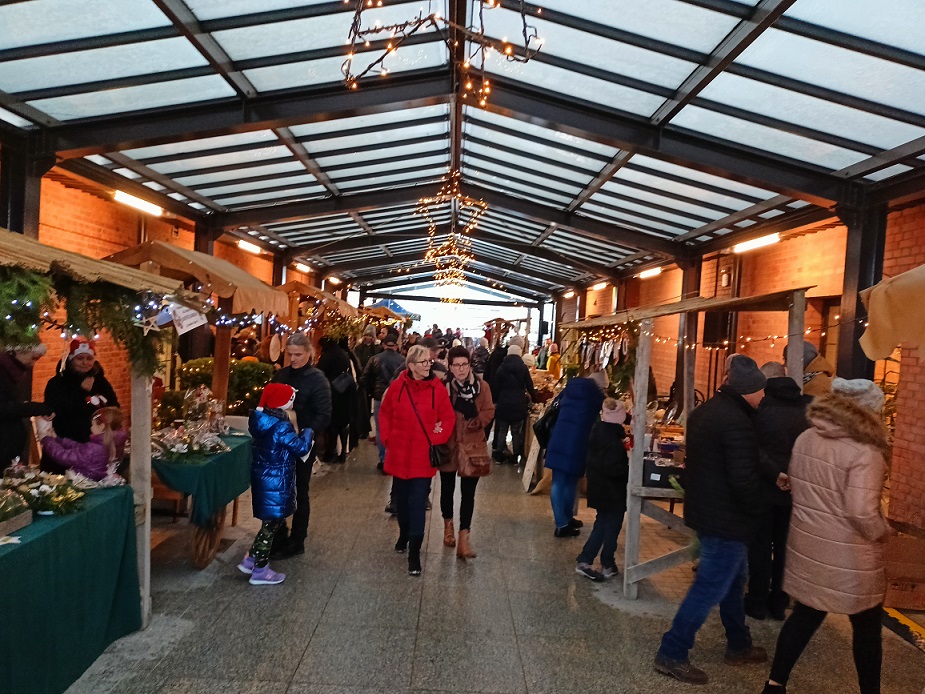Prioritising the places and people that need it the most
TLENOWNIA Social Activation Center
Social, spatial, functional, environmental and technical revitalization of the city of Czempin.
The project is a comprehensive undertaking aimed at improving the quality of life of residents and increasing the attractiveness of the city. TLENOWNIA Social Activation Center as a friendly, attractive and safe public space, adapted from a post-industrial building - an oxygen factory. The project included the revitalization of green areas, creation of playgrounds, outdoor gyms and communication routes. The project was implemented to respond to the social needs of residents.
Poland
Local
Czempin Commune
It addresses urban-rural linkages
It refers to a physical transformation of the built environment (hard investment)
Yes
2022-04-12
Yes
ERDF : European Regional Development Fund
No
No
As an individual
The aim of the project is to promote social inclusion, a walk against poverty and guaranteed discrimination. The aim of the detailed project is to provide social services and activate residents through the Social Activation Center and a friendly, attractive and safe public space. The target g- Creation of the TLENOWNIA Social Activation Center. The place is the seat of the Cultural Center, City Library and Non-Governmental Organizations. There is a sociotherapeutic common room in the building, where the Social Welfare Center conducts workshops for families with social dysfunctions. The center aims to social integration and activation of residents through various cultural, educational and social activities. This space serves as a place for meetings, workshops and local events, supporting the development of the community.
-revitalization and creation of green areas that serve recreational and relaxation purposes. New trees and shrubs were planted, and walking paths were created, which contributed to improving air quality and the aesthetics of urban space, as well as the possibility of social integration of residents.
-new playgrounds, sports fields and outdoor gyms were built. These zones are available to all residents, encouraging them to spend time actively and promoting a healthy lifestyle and integration of residents.roup of the project was all residents of the Czempiń commune.
-new playgrounds, sports fields and outdoor gyms were built. These zones are available to all residents, encouraging them to spend time actively and promoting a healthy lifestyle and integration of residents.
- Installing a monitoring system in strategic points of the city increased public safety.
The project was a success, bringing tangible benefits to the local community and improving the city's image, and also helps fight pathological behavior.
-revitalization and creation of green areas that serve recreational and relaxation purposes. New trees and shrubs were planted, and walking paths were created, which contributed to improving air quality and the aesthetics of urban space, as well as the possibility of social integration of residents.
-new playgrounds, sports fields and outdoor gyms were built. These zones are available to all residents, encouraging them to spend time actively and promoting a healthy lifestyle and integration of residents.roup of the project was all residents of the Czempiń commune.
-new playgrounds, sports fields and outdoor gyms were built. These zones are available to all residents, encouraging them to spend time actively and promoting a healthy lifestyle and integration of residents.
- Installing a monitoring system in strategic points of the city increased public safety.
The project was a success, bringing tangible benefits to the local community and improving the city's image, and also helps fight pathological behavior.
Revitalization
Activation
Integration
Society
Transformation
The project had a positive impact on the policy towards an economy that uses resources efficiently, is environmentally friendly and competitive. The implementation of the project is proof that the commune supports environmental protection through revitalization. Supplying the CAS building with heat using a gas boiler room instead of a coal boiler room, thermal modernization of the building: insulation of walls, floors, new windows and doors, insulation of flat roofs resulted in a reduced demand for thermal energy and a drop in CO2 emissions. The project allows for the rational use of electricity thanks to the installation of energy-saving lighting (including LED), toilet entrance lighting automatically controlled by a twilight sensor and turned on only when using the toilet and water - washbasin faucets, photocell-controlled urinals, two-part toilet cisterns, a retention tank aggregating rainwater from the roofs and the entire paved area, which is used for watering. The project uses and promotes renewable energy by installing photovoltaic panels on the CAS roof to obtain electricity. The sewage is discharged into the sanitary sewage system, which eliminates soil contamination due to leaks in the septic tank. The project does not have a negative impact on Natura 2000 areas and is not burdensome due to noise, radiation or gas emissions. The materials used have approvals and certificates allowing their use, and thanks to the technology used to carry out construction works, no damage to the environment occurred during the construction and operation stages - demolition materials were used for re-building. The project counteracts the loss of biodiversity - numerous trees/shrubs were planted and lawns were made to ensure natural infiltration into the ground.
The project uses natural environmental resources in a rational and economical way.
The project uses natural environmental resources in a rational and economical way.
The revitalized infrastructure, including green and blue infrastructure, improved the aesthetics of the city and the quality of life of its residents. Green areas, playgrounds and outdoor gyms encourage physical activity outdoors. Improving the city's infrastructure and aesthetics makes Czempiń an attractive place to visit and live, which supports the local economy and promotes the region.
The increase in the city's tourist attractiveness, thanks to the improvement of infrastructure and aesthetics, attracts more and more visitors, increasing demand for services, which supports local businesses and generates additional revenues for the commune. Improving urban infrastructure and the aesthetics of public space contributed to an increase in real estate values. Higher real estate values in Czempiń generate higher revenues from local taxes, which support the commune budget.
In every city in European countries there are degraded areas and post-industrial facilities, therefore the activities carried out within the project can be implemented anywhere.
The increase in the city's tourist attractiveness, thanks to the improvement of infrastructure and aesthetics, attracts more and more visitors, increasing demand for services, which supports local businesses and generates additional revenues for the commune. Improving urban infrastructure and the aesthetics of public space contributed to an increase in real estate values. Higher real estate values in Czempiń generate higher revenues from local taxes, which support the commune budget.
In every city in European countries there are degraded areas and post-industrial facilities, therefore the activities carried out within the project can be implemented anywhere.
The project is a comprehensive undertaking that aims to improve the quality of life of residents and increase the attractiveness of the city. It promotes social inclusion, the fight against poverty and all forms of discrimination. The implementation of the project contributed to increasing the availability of social services and activating residents through the creation of the TLENOWNIA Social Activation Center and a friendly, attractive and safe public space.
The project contributed to: increasing the cooperation of social welfare institutions with people with various types of social dysfunctions, integration of residents thanks to participation in various types of events, activation of seniors thanks to the creation of a place for a senior club, social inclusion in the activities of organizations such as choir and orchestra thanks to the creation of appropriate infrastructure. Creation of a new headquarters for non-governmental organizations, making facilities available for non-governmental organizations. Social inclusion in the activities of public institutions (Cultural Center, Library, Museum Chamber)
The new infrastructure limits social exclusion, enabling all interested parties, including professionally excluded people, retirees, disability pensioners and the disabled, to use all forms of free activity, assistance and care.
The project complies with the principles of equal opportunities and non-discrimination, including accessibility for people with disabilities and the principle of equal opportunities for women and men.
In every city in European countries there are degraded areas and post-industrial facilities, therefore the activities carried out within the project can be implemented anywhere.
The project contributed to: increasing the cooperation of social welfare institutions with people with various types of social dysfunctions, integration of residents thanks to participation in various types of events, activation of seniors thanks to the creation of a place for a senior club, social inclusion in the activities of organizations such as choir and orchestra thanks to the creation of appropriate infrastructure. Creation of a new headquarters for non-governmental organizations, making facilities available for non-governmental organizations. Social inclusion in the activities of public institutions (Cultural Center, Library, Museum Chamber)
The new infrastructure limits social exclusion, enabling all interested parties, including professionally excluded people, retirees, disability pensioners and the disabled, to use all forms of free activity, assistance and care.
The project complies with the principles of equal opportunities and non-discrimination, including accessibility for people with disabilities and the principle of equal opportunities for women and men.
In every city in European countries there are degraded areas and post-industrial facilities, therefore the activities carried out within the project can be implemented anywhere.
The area intended for revitalization has been subjected to a number of studies. In 2016, the study "Diagnosis of social problems among members and residents of Czempiń communes" was carried out. In 2017, a survey of residents in the cultural life of the commune. The level of dispatches meets the needs of residents. Additionally, in 2017, research and analyzes for the use of the Revitalization Program, including group studies, surveys and consultations.
in the research that led to the community and its application. Before starting the project, public consultations were held in-depth interviews and meetings with councilors and chairmen, during which it was indicated that the reason was the low social activity of the residents, which was combined with an impact on the actual shape of this project. Applications have been submitted regarding the intention and form of use of the TLENOWNIA Social Activation Center facility as well as administrative declarations that support financial support after obtaining the project.
in the research that led to the community and its application. Before starting the project, public consultations were held in-depth interviews and meetings with councilors and chairmen, during which it was indicated that the reason was the low social activity of the residents, which was combined with an impact on the actual shape of this project. Applications have been submitted regarding the intention and form of use of the TLENOWNIA Social Activation Center facility as well as administrative declarations that support financial support after obtaining the project.
Before starting the project, public consultations were carried out with the participation of local stakeholders. The Commune Office in Czempiń cooperated with, among others, the Cultural Center, the Municipal Library, the Municipal Utilities Company and the Social Welfare Center. Interviews and meetings were conducted with councilors of the Czempiń City Council and chairmen of the estates. Representatives of organizational units also took part in the consultations. The added value of stakeholder involvement is a project that responds to the most important needs of residents. The project was implemented to best serve the residents and provide them with access to services that were not previously available in the Czempiń commune. At the regional level, the Czempiń Commune cooperated with the Marshal's Office of the Greater Poland Voivodeship during the implementation of the project as part of the funding received for the project. The added value of the involvement of various units was the cooperation, advice and exchange of experiences.
During the implementation of the project, various fields of knowledge were implemented and representatives of these fields took part in its creation. The project reflects such fields of knowledge as: architecture, construction, knowledge about climate, environment and biodiversity, social policy, economics, including social economy (one of the users of the facility is a social economy entity) and culture and historical heritage. During the design work on construction documentation, the solutions were discussed with interested parties who are currently actively involved in the life of the created infrastructure. During the project implementation, representatives of the above-mentioned fields cooperated with each other - inspectors, designers, administration representatives, representatives of local government units, i.e. the City Library and the Cultural Center, as well as employees of the Social Welfare Center. The added value of this cooperation is a project in which not only the physical revitalization of the city space was implemented, but also the strengthening of social bonds, improvement of the quality of life of residents and the sustainable development of the area as well as activities in the field of green and blue infrastructure, which has a positive impact on the climate, among others, by reducing emissions.
The effect of the project implementation is, among others: the revitalized building of the former "Oxygen Plant" and the creation of a modern Social Activation Center. It is a multifunctional building and area, bringing together many institutions and entities providing a wide range of services to the inhabitants of the region and the commune. A revitalized post-industrial facility, using a number of innovative solutions, housing a museum chamber, an active cultural center, a public library, a multi-purpose room and a cafe run by a social cooperative. Additionally, as part of the project, new green areas, playgrounds, outdoor gyms and a brine graduation tower, unique in the area, were created. It was a very large-scale project of this nature, carried out in a small town and not in a large city, because smaller towns also struggle with various problems regarding spatial, economic and social order. The CAS TLENOWNIA building has been revitalized. It is a facility that has been awarded many times, including: won the main prize Grand Prix in the Architectural Award of the Wielkopolska Voivodeship competition for the most beautiful building in the voivodeship and won in the "Public buildings" category, the "Łączy nas WIELkopolskiE" plebiscite in the "Architecture and culture connects us" category, organized by the Marshal's Office of the Wielkopolska Voivodeship. He also received a Statuette in the "Revitalization of public space and protection of monuments" category.
The project used a comprehensive and integrated approach that took into account social, economic, spatial and environmental aspects. The project used a participatory approach through the active participation of residents, entrepreneurs and local authorities. Strategic and operational planning was used - a revitalization strategy was developed. Economic approach - obtaining financial resources for the implementation of the project from the European Union budget, monitoring and evaluation were also used.
The project implementation consisted of:
- developing a revitalization program
- conducting public consultations
- purchasing the area from a private owner to revitalize it - TLENOWNIA Social Activation Center
- obtaining funding for the project
- implementation of construction works and other works aimed at implementing the project
- completing the project and achieving the intended indicators of social and economic changes thanks to the created infrastructure.
The project implementation consisted of:
- developing a revitalization program
- conducting public consultations
- purchasing the area from a private owner to revitalize it - TLENOWNIA Social Activation Center
- obtaining funding for the project
- implementation of construction works and other works aimed at implementing the project
- completing the project and achieving the intended indicators of social and economic changes thanks to the created infrastructure.
As part of the project, products and technologies were used that can be replicated in other places and with other users.
Project activities can be replicated through the revitalization of degraded industrial facilities and degraded green areas by other entities, enterprises or private individuals. The project encourages others to collect rainwater and use it to water greenery. The project sets an example for infrastructure users to use all possible energy and water saving solutions (thermal modernization, lighting with motion sensors, water with motion sensors, photovoltaic panels, energy-saving lighting)
All activities within the project are aimed at promoting conscious ecological behavior, encouraging commune residents to increase the amount of greenery in their households to collect rainwater, and to promote energy transformation, which brings multidimensional benefits to the environment.
Other units can also follow the example by creating free office space for non-governmental organizations, as well as free access to the infrastructure created as part of the project. The project may encourage other entities to make their infrastructure available free of charge to all external socially active entities, in order to increase access to it for residents.
Project activities can be replicated through the revitalization of degraded industrial facilities and degraded green areas by other entities, enterprises or private individuals. The project encourages others to collect rainwater and use it to water greenery. The project sets an example for infrastructure users to use all possible energy and water saving solutions (thermal modernization, lighting with motion sensors, water with motion sensors, photovoltaic panels, energy-saving lighting)
All activities within the project are aimed at promoting conscious ecological behavior, encouraging commune residents to increase the amount of greenery in their households to collect rainwater, and to promote energy transformation, which brings multidimensional benefits to the environment.
Other units can also follow the example by creating free office space for non-governmental organizations, as well as free access to the infrastructure created as part of the project. The project may encourage other entities to make their infrastructure available free of charge to all external socially active entities, in order to increase access to it for residents.
The project addressed such global challenges as social problems regarding an aging society, social inclusion of youth and young adults in volunteering and social development. The project responds to global challenges regarding rational space management and sustainable spatial development. It encourages the use of existing degraded areas/facilities and not the use of free spaces for new functions. It encourages giving life back to objects and areas that have been excluded from use. The project raises the issue of economic development of previously degraded areas, which, thanks to this impulse, encourage investment and economic growth in such areas.
The implementation of the project had a local impact on global challenges regarding climate change. The implementation of the project contributed to improving the condition of the environment and rational management of its resources, among others. by supporting nature protection, reducing emissions of harmful substances into the atmosphere, and improving water and sewage management. The project uses energy-saving solutions, optimization of energy management, and the use of alternative energy sources. As part of the task, trees and shrubs were planted, green areas were created, and communication routes were created encouraging the use of ecological forms of transport.
The implementation of the project had a local impact on global challenges regarding climate change. The implementation of the project contributed to improving the condition of the environment and rational management of its resources, among others. by supporting nature protection, reducing emissions of harmful substances into the atmosphere, and improving water and sewage management. The project uses energy-saving solutions, optimization of energy management, and the use of alternative energy sources. As part of the task, trees and shrubs were planted, green areas were created, and communication routes were created encouraging the use of ecological forms of transport.
The following indicators were achieved as part of the project implementation:
Area of areas covered by revitalization – 2.12 ha
Open space created or reclaimed in urban areas – 13,381.90 m2
Number of supported infrastructure facilities located in revitalized areas - 5
Number of facilities adapted to the needs of people with disabilities – 5
Length of constructed municipal roads – 0.13 km
Length of rebuilt municipal roads - 0.17 km
Public or commercial buildings constructed or renovated in urban areas – 1,731.82 m2
The implementation of the project fully meets the definition of the category "Prioritization of places and people who need it most." The infrastructure created as part of the project serves the residents and responds to their basic needs.
Area of areas covered by revitalization – 2.12 ha
Open space created or reclaimed in urban areas – 13,381.90 m2
Number of supported infrastructure facilities located in revitalized areas - 5
Number of facilities adapted to the needs of people with disabilities – 5
Length of constructed municipal roads – 0.13 km
Length of rebuilt municipal roads - 0.17 km
Public or commercial buildings constructed or renovated in urban areas – 1,731.82 m2
The implementation of the project fully meets the definition of the category "Prioritization of places and people who need it most." The infrastructure created as part of the project serves the residents and responds to their basic needs.

